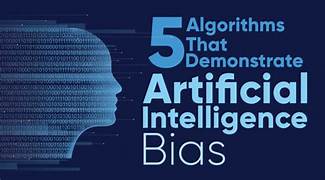How Can We Address the Issue of Algorithmic Bias in AI Systems?
Artificial Intelligence (AI) has become an integral part of our daily lives, influencing decisions in areas such as healthcare, finance, education, and criminal justice. While AI systems offer significant benefits, they are not without flaws, one of the most critical being algorithmic bias. Algorithmic bias refers to the systematic and unfair discrimination embedded within AI systems, often mirroring or amplifying biases present in their training data. Addressing this issue is crucial to ensure that AI systems promote fairness, equity, and justice.
Understanding Algorithmic Bias
1. What Is Algorithmic Bias?
Algorithmic bias occurs when AI systems produce prejudiced outcomes due to biases in their training data, design, or implementation. For example, a hiring algorithm trained on past hiring data might favor certain demographics over others, perpetuating historical inequalities.
2. Sources of Bias
Bias in AI can originate from various sources, including:
- Training Data: Historical data may reflect societal prejudices, such as racial or gender biases.
- Algorithm Design: Flawed assumptions during the development process can introduce bias.
- Human Oversight: Developers’ conscious or unconscious biases can influence AI systems.
- Operational Context: Biases can emerge when AI systems are deployed in contexts different from those for which they were designed.
3. Impact of Algorithmic Bias
The consequences of algorithmic bias can be far-reaching, affecting individuals and communities in areas such as:
- Employment: Discriminatory hiring algorithms can exclude qualified candidates.
- Healthcare: Biased medical algorithms may lead to unequal treatment or misdiagnoses.
- Criminal Justice: Predictive policing systems can disproportionately target certain groups.
Strategies to Address Algorithmic Bias
1. Improving Data Quality
The quality and representativeness of training data are foundational to reducing bias in AI systems.
- Diverse Datasets: Collect and use datasets that reflect the diversity of the population.
- Data Audits: Regularly audit datasets to identify and rectify biases.
- Synthetic Data: Use synthetic data to supplement underrepresented groups in datasets.
2. Algorithm Design and Development
AI systems should be designed with fairness as a priority.
- Bias Detection Tools: Incorporate tools to identify and measure bias during development.
- Explainable AI (XAI): Ensure AI systems are transparent and interpretable, allowing stakeholders to understand their decision-making processes.
- Fairness Metrics: Use fairness metrics, such as demographic parity or equal opportunity, to evaluate system performance.
3. Human Oversight and Collaboration
Human oversight is critical to mitigating bias and ensuring ethical AI deployment.
- Diverse Development Teams: Include individuals from varied backgrounds in AI development to reduce the influence of homogeneous perspectives.
- Stakeholder Engagement: Collaborate with affected communities to understand their concerns and priorities.
- Ethical Guidelines: Establish and enforce ethical guidelines for AI development and deployment.
4. Regulation and Accountability
Governments and organizations must establish frameworks to hold AI systems accountable.
- Regulatory Standards: Develop laws and regulations to ensure fairness and transparency in AI systems.
- Audit Mechanisms: Implement regular audits to assess AI systems for compliance with ethical standards.
- Liability Frameworks: Define clear liability frameworks for harm caused by biased AI systems.
5. Continuous Monitoring and Feedback
Bias mitigation is an ongoing process that requires regular evaluation and improvement.
- Real-Time Monitoring: Continuously monitor AI systems for biased outcomes.
- Feedback Loops: Use user feedback to identify and address unintended consequences.
- Iterative Updates: Regularly update AI systems to reflect changes in societal norms and expectations.
Case Studies and Examples
1. Amazon’s Hiring Algorithm
In 2018, Amazon discontinued a hiring algorithm that demonstrated bias against women. The system had been trained on historical hiring data, which favored male candidates. This case highlights the importance of addressing bias in training data and ensuring fairness in algorithm design.
2. Facial Recognition Technology
Studies have shown that some facial recognition systems have higher error rates for certain demographic groups, particularly women and individuals with darker skin tones. Efforts to address this bias include using more diverse training datasets and improving algorithmic accuracy for underrepresented groups.
3. Predictive Policing
Predictive policing algorithms have been criticized for disproportionately targeting minority communities. To mitigate this issue, organizations are exploring alternative approaches, such as community-led policing strategies and transparency in algorithmic decision-making.
Ethical Considerations
1. Fairness
Ensuring fairness in AI systems involves addressing systemic inequalities and promoting equitable outcomes for all individuals.
2. Transparency
AI systems must be transparent in their decision-making processes to build trust and accountability.
3. Inclusion
Developers must prioritize inclusion by involving diverse stakeholders in AI development and deployment.
4. Justice
AI systems should align with principles of social justice, ensuring they do not perpetuate or exacerbate existing inequalities.
The Role of Education and Awareness
Educating developers, policymakers, and the public about algorithmic bias is essential to fostering responsible AI development.
- Training Programs: Offer training programs on ethical AI development and bias mitigation.
- Public Awareness Campaigns: Increase awareness of algorithmic bias and its impact on society.
- Academic Research: Support research initiatives focused on understanding and addressing bias in AI systems.
Conclusion
Algorithmic bias poses a significant challenge to the ethical and equitable deployment of AI systems. Addressing this issue requires a multifaceted approach, including improving data quality, designing fair algorithms, ensuring human oversight, and implementing robust regulatory frameworks. By prioritizing fairness, transparency, and inclusion, we can harness the transformative potential of AI while minimizing harm and promoting justice. The journey to unbiased and fair AI systems is a collective responsibility that demands the commitment of developers, policymakers, and society as a whole.


